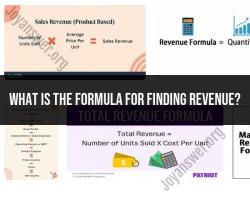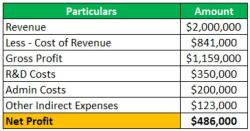When should you use financing with a balloon payment?
Using financing with a balloon payment can be suitable in specific situations where the structure aligns with the financial goals and circumstances of the borrower. Here are some ideal situations when financing with a balloon payment might be considered:
1. Short-Term Financing Needs:
- Balloon payments are often associated with short-term loans. If you have a short-term financing need and anticipate having the means to pay off the remaining balance at the end of the term, a balloon payment structure may be appropriate.
2. Business Expansion:
- If you are a business owner looking to expand or launch a new project and expect a substantial inflow of cash or revenue in the future, financing with a balloon payment could provide flexibility in managing cash flow during the initial stages.
3. Real Estate Investment:
- Real estate transactions, such as commercial mortgages or property development projects, sometimes use balloon payments. This is particularly common when investors plan to sell the property or refinance before the balloon payment is due.
4. Anticipated Increase in Income:
- Individuals or businesses expecting a significant increase in income, such as through a large contract, settlement, or business expansion, might opt for balloon financing. This allows them to manage lower payments initially and pay off the bulk of the debt when the expected increase in income materializes.
5. Refinancing Strategy:
- Borrowers who plan to refinance their loan or secure alternative financing before the balloon payment becomes due may find balloon financing attractive. This strategy allows them to benefit from lower initial payments and then refinance to manage the final payment.
6. Unique Cash Flow Situations:
- In industries with seasonal cash flows or businesses with irregular income patterns, balloon payments can be structured to align with periods of higher expected revenue. This helps in managing cash flow during leaner times.
7. Customized Loan Agreements:
- For borrowers seeking customized loan agreements, particularly in negotiations with private lenders or investors, balloon payments can be part of a tailored financing package. This customization allows for flexibility in meeting the needs of both the borrower and lender.
8. Highly Confident in Future Income:
- If a borrower is highly confident in their ability to generate substantial income or secure financing at the time the balloon payment is due, they might choose this financing option to benefit from lower initial payments.
9. Tax Planning:
- For businesses engaging in tax planning, a balloon payment structure can provide advantages in managing tax liabilities. It allows businesses to defer a significant portion of the loan to a future period when it might be more tax-efficient.
Important Considerations:
Risk Assessment: Balloon payments come with the risk of not being able to meet the large final payment. Borrowers should conduct a thorough risk assessment and have a clear plan for managing the balloon payment.
Future Income Uncertainty: Using balloon financing assumes a level of confidence in future income or financial events. If there's significant uncertainty, alternative financing structures with more predictable payments might be preferable.
Refinancing Contingency: If the plan involves refinancing to meet the balloon payment, borrowers should be aware of potential challenges in securing favorable terms and conditions for refinancing.
Before opting for financing with a balloon payment, it's crucial to thoroughly evaluate the specific circumstances, understand the risks involved, and ensure that the financial strategy aligns with the overall goals and capacity of the borrower. Consulting with financial advisors or experts is advisable in such situations.
Understanding the Concept of Balloon Payments and Their Implications
A balloon payment is a large, lump-sum payment that is due at the end of a loan term, typically following a series of smaller regular payments. Balloon payments are commonly used in financing options for automobiles, mortgages, and business loans.
Implications of Balloon Payments:
Lower Initial Payments: Balloon payments often allow for lower initial monthly payments, making the loan more affordable in the early stages.
Significant Final Payment: The balloon payment represents a substantial financial obligation that must be addressed at the end of the loan term.
Potential for Refinancing: Refinancing may be an option to avoid or defer the balloon payment, but it depends on creditworthiness and market conditions.
Higher Interest Costs: Balloon loans may carry higher interest rates due to the increased risk associated with the large final payment.
Evaluating Financial Strength and Affordability for Balloon Payment Financing
Before considering balloon payment financing, carefully assess your financial strength and ability to handle the large final payment.
Factors to Consider:
Financial Stability: Evaluate your current income, expenses, and savings to determine if you can comfortably manage the balloon payment.
Contingency Plan: Develop a contingency plan in case your financial situation changes, ensuring you can still meet the balloon payment obligation.
Creditworthiness: Maintain a good credit history to secure favorable loan terms and potentially reduce interest costs.
Refinancing Potential: Assess whether refinancing is a viable option to defer or avoid the balloon payment if your financial situation improves.
Alternative Financing Options: Explore alternative financing options, such as traditional fixed-rate loans, if the balloon payment poses a significant financial burden.
Considering Alternatives and Strategies for Balloon Payment Financing
If you opt for balloon payment financing, consider strategies to manage the large final payment effectively.
Alternatives to Balloon Payment Financing:
Fixed-Rate Loans: Traditional fixed-rate loans offer consistent monthly payments throughout the loan term, eliminating the balloon payment obligation.
Shorter Loan Terms: Consider shorter loan terms to reduce the overall interest paid and the size of the balloon payment.
Higher Regular Payments: Increase your regular monthly payments to reduce the outstanding balance and make the balloon payment more manageable.
Strategies for Managing Balloon Payment Financing:
Savings Plan: Establish a dedicated savings plan to accumulate funds specifically for the balloon payment.
Investment Strategy: Consider investing a portion of your savings to potentially grow your funds and offset the balloon payment.
Refinancing Planning: Monitor market conditions and your creditworthiness to determine if refinancing is a suitable option before the balloon payment.
Professional Guidance: Consult with a financial advisor to develop a personalized plan for managing your balloon payment obligations.













